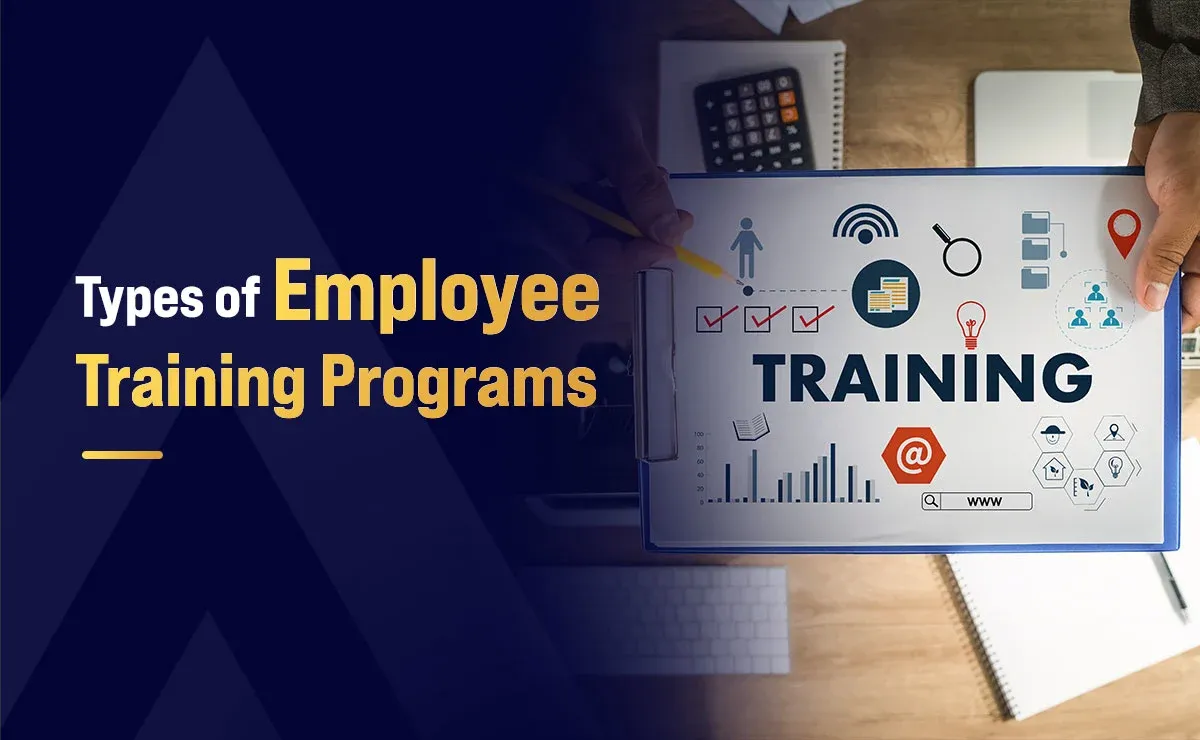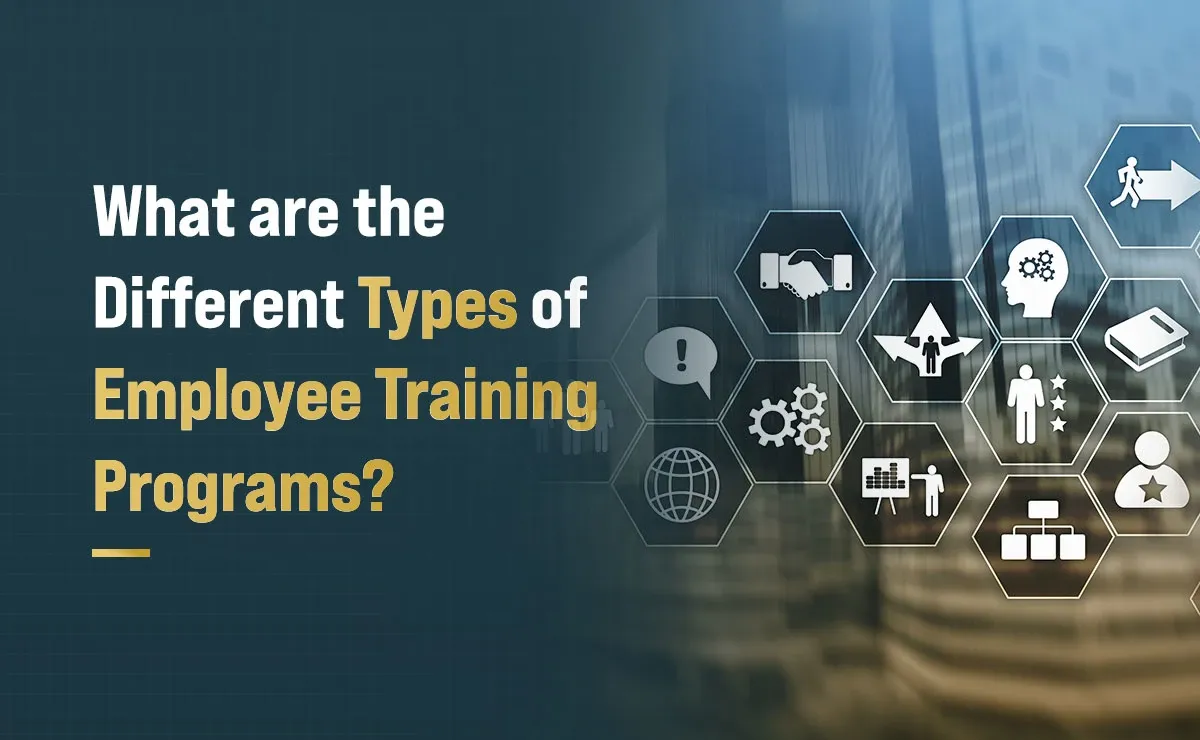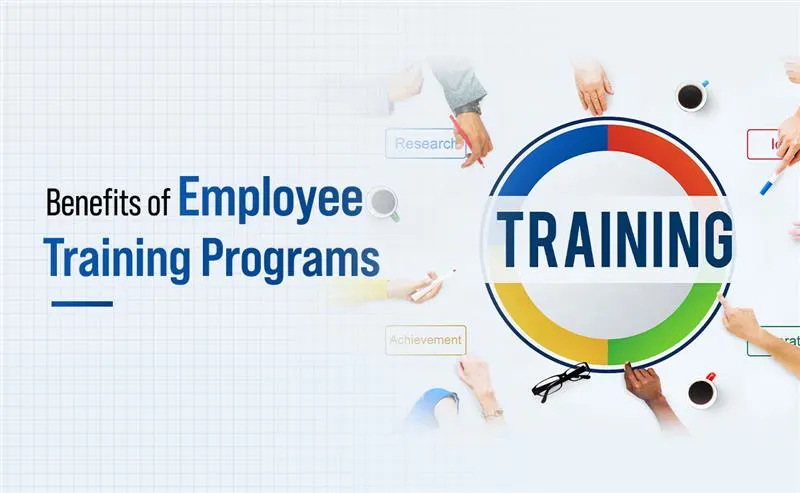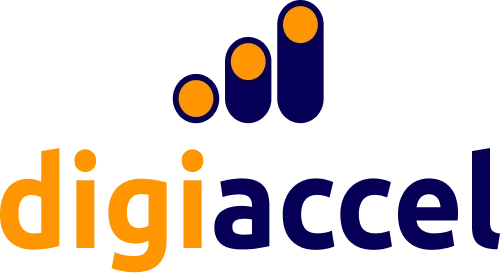Types of Employee Training Programs

Employees are an organization’s most valuable asset in an increasingly competitive business landscape. Equipping them with the right skills, knowledge, and behaviors not only accelerates their performance but also drives engagement, retention, and bottom‑line impact for a business. This win-win strategy for both the employee and organization makes employee training programs an absolute necessity across all industries.
An employee training program is a strategic framework designed to foster professional growth and achievement within a company. These programs cover everything from essential compliance and safety training to advanced leadership development and cutting-edge digital skills.
This article explores the types of employee training programs and their full spectrum of learning initiatives, from foundational orientation to advanced reskilling, along with the benefits they offer.
What Is an Employee Training Program?
An employee training program is a well‑structured suite of learning initiatives designed to equip staff with the knowledge, skills, and competencies needed to excel in their roles, meet regulatory requirements, and contribute to organizational goals. At its core, an employee training program is:
- Purpose‑Driven: It begins by pinpointing specific business objectives (e.g., faster onboarding, higher sales conversion, tighter compliance) and aligns every module and activity to those goals.
- Systematic: It follows a clear pedagogy or learning path, often combining assessments, multimedia content, hands‑on practice, peer coaching, and on‑the‑job training, so that each lesson builds on the last.
- Measurable: Success is determined through defined metrics, such as knowledge checks, performance improvements, or business outcomes, ensuring that both the employee and the organization can track real progress.
- Continuous: Instead of a one‑time event, it embeds reinforcements like micro‑learning, refresher sessions, and in‑app guidance so knowledge and skills “stick” and evolve as roles and technologies change.
At its core, an employee training program represents a deliberate commitment to workforce development, transforming educational experiences into measurable gains in efficiency, morale, and operational flexibility.
What are the Different Types of Employee Training Programs?
Organizations tailor their training portfolios to size, industry, and strategic priorities. Below are some of the most common and impactful types of employee training programs in modern workplaces, based on 4 different categories.

New Hire Integration
1) Orientation Training
An orientation training is a structured introduction and welcome plan that prepares new employees to understand their roles, integrate into the workplace, and comply with company standards.
Core Elements Include:
- A tour of facilities and an overview of organizational structure, so newcomers know where to go and whom to contact.
- Clear explanation of job responsibilities and performance expectations to set early success criteria.
- Evaluating company policies, protocols, and safety measures to guarantee adherence and promote a secure workplace environment.
- Introductions to team members and key stakeholders to build initial relationships.
- Access to resources, such as mentors or online modules, for ongoing support.
Outcome: New employees feel informed, connected, and confident to start contributing on day one, reducing turnover risk and ramp‑up time.
2) Onboarding Training
An onboarding training program is a multi‑stage process that equips new employees with the knowledge, tools, and competencies they need to become effective and engaged contributors.
Core Elements Include:
- Functional training that provides an overview of products, services, and organizational structure to establish context.
- Face-to-face workshops facilitated by managers and industry specialists to exchange proven methodologies.
- Job shadowing, which allows new hires to observe colleagues and learn workflows firsthand.
- Learning modules and exercises delivered via a Learning Management System (LMS) to reinforce key concepts.
- A personalized 30‑60‑90 day plan and an assigned college to guide integration and goal setting.
Outcome: Properly integrating employees who understand their responsibilities, how to navigate the organization, and how their work contributes to broader objectives.
Risk & Culture Governance
1) Compliance Training
A compliance training initiative is a systematic training effort to ensure that staff comprehend and follow applicable laws, regulations, and internal policies effectively.
Core Elements Include:
- Mandatory instruction on applicable laws and regulatory requirements to avoid legal risks.
- Role‑specific modules that address industry‑unique compliance standards.
- Covering key topics such as anti‑harassment and discrimination, data privacy and cybersecurity, health and safety, ethics, and anti‑corruption.
- Interactive scenarios and case studies that illustrate proper conduct and decision-making.
- Assessments and completion tracking to verify understanding and document compliance.
Outcome: A well‑informed workforce that consistently applies required protocols, reducing incidents, fines, and reputational damage.
2) Diversity Training
A diversity training program equips employees with the awareness, skills, and right attitudes needed to appreciate and collaborate with colleagues from different backgrounds, cultures, and perspectives.
Core Elements Include:
- Introducing key concepts such as unconscious bias, inclusion, and equity to build foundational understanding.
- Raising cultural and demographic awareness so employees recognize how their actions affect others.
- Teaching inclusive behaviors and practices that foster respect and belonging in daily interactions.
- Developing conflict resolution techniques that address misunderstandings across diverse viewpoints.
- Highlighting the business value of diversity to improve talent attraction, retention, and innovation.
Outcome: Decreased discrimination cases, an enhanced corporate reputation, and broader recruitment opportunities.
3) Safety Training
A safety training initiative educates employees on hazard identification, accident prevention, and emergency response protocols in their work environment.
Core Elements Include:
- Instruction on ergonomics, safe lifting techniques, and proper body mechanics to reduce musculoskeletal injuries.
- Fire safety procedures and evacuation drills that ensure rapid and orderly exits during emergencies.
- Strategies to mitigate workplace violence by training staff to identify red flags and resolve tensions constructively.
- Fall protection and ladder safety guidelines that minimize risks when working at heights.
- Training in personal protective equipment selection, use, and maintenance to safeguard against chemical, environmental, and mechanical hazards.
Outcome: A decline in workplace accidents, adherence to safety regulations, and a culture prioritizing well-being.
Skill Mastery
1) Technical Training
A technical training program is a structured approach to teaching employees the specific, practical skills and knowledge required to perform technical tasks and operate specialized tools or software effectively.
Core Elements Include:
- Clear connection between training content and daily responsibilities to maintain relevance.
- Concrete instances and scenario-based analyses that showcase direct effects on job performance and results.
- Covering key areas such as programming languages and frameworks, enterprise systems (ERP, CRM, HCM), data analytics and BI tools, and standard operating procedures with process documentation.
- Embedded in-app assistance and instant support through interactive tutorials, contextual hints, and dynamic notifications.
Outcome: Accelerated proficiency, reduced errors, and higher user adoption rates of critical systems.
2) Product Training
A product training program is a focused initiative that equips employees with in‑depth knowledge of a specific product’s features, functions, and benefits so they can work with it confidently and effectively.
Core Elements Include:
- Comprehensive product knowledge that details characteristics, capabilities, and advantages.
- Practical application examples and case studies that demonstrate how to use the product in real‑world scenarios.
- Customer communication practice to prepare staff for answering questions and promoting the product persuasively.
- Ongoing update sessions that introduce new features, enhancements, and version changes.
Outcome: Consistent, expert knowledge across customer‑facing teams, leading to more effective sales cycles, higher customer satisfaction, and reduced support escalations.
3) Quality Assurance (Q/A) Training
A quality assurance training program is a series of learning activities that equip team members with the knowledge and skills to enforce quality standards, monitor processes, and drive continuous improvement across products and services.
Core Elements Include:
- Instruction on relevant standards and codes such as ISO 9001 and industry regulations to ensure compliance.
- Statistical process control techniques and frameworks like Six Sigma for measuring and improving quality.
- Non‑destructive testing methods and calibration procedures to verify material and equipment integrity.
- Inspection and testing protocols for dimensional, pressure, and visual assessments.
- Document control, recordkeeping, and root cause analysis with corrective action planning.
- Workplace safety practices and effective communication to foster a quality‑focused culture.
Outcome: Higher product consistency, reduced waste, and increased customer trust and loyalty.
4) Sales Training
A sales training program is a structured initiative that equips sales professionals with the skills, knowledge, and techniques needed to attract, engage, and retain customers while meeting revenue goals.
Core Elements Include:
- Instruction in proven sales methods and negotiation tactics that guide customer conversations from prospecting to closing.
- Deep product and market insights that enable representatives to address customer challenges and articulate value propositions.
- Customer‑centric communication and relationship‑building strategies that foster trust and long‑term loyalty.
- End‑to‑end sales process guidance covering prospect qualification, proposal development, and post‑sale follow‑up.
- Hands-on activities like interactive scenarios, case evaluations, and immersive simulations to solidify understanding and enhance self-assurance.
Outcome: Shorter sales cycles, higher closing rates, and improved forecasting accuracy.
5) Upskilling
An employee upskilling program strengthens existing competencies and introduces new capabilities so that individuals can excel in the evolving roles and technologies of the market.
Core Elements Include:
- Performing a competency assessment to pinpoint critical learning needs and focus areas for growth.
- Designing personalized learning paths that combine online courses, workshops, and micro‑learning modules.
- Integrating practical tasks and real-world projects to reinforce newly acquired competencies.
- Providing mentorship and coaching from subject‑matter experts to guide progress.
- Tracking progress via evaluations, key performance indicators, and iterative input mechanisms.
Outcome: Enhances the employability of the individual, higher internal mobility, and greater organizational competency.
6) Reskilling
A reskilling program teaches existing employees the new skills and competencies required to transition into different or high-impact roles as organizational needs evolve.
Core Elements Include:
- Identifying future roles based on strategic goals and emerging industry trends.
- Mapping the specific functional, leadership, and digital skills needed for each target position.
- Selecting candidates whose current abilities and interests align with the new role.
- Designing personalized learning paths that combine instructor‑led sessions, on‑the‑job practice, and digital modules.
- Using assessments and analytics to track progress, close skill gaps, and measure business impact.
Outcome: Minimized layoffs, retention of institutional knowledge, and a resilient talent pool ready for digital transformation.
Leadership & Collaboration
1) Leadership Training
A leadership training program is a structured series of learning experiences designed to help individuals develop and refine the skills and behaviors required to lead teams and drive organizational success.
Core Elements Include:
- Modules on effective communication, strategic decision making, and creative problem-solving that build foundational leadership competencies.
- Interactive sessions focused on navigating change, evaluating driving factors, and leading teams during transitions.
- Techniques for stakeholder engagement, including feedback collection, active listening, and strategies to build support.
- Mentorship and experiential learning through case studies, shadowing senior leaders, and project assignments.
Outcome: A robust leadership pipeline improves managerial effectiveness and enhances organizational agility.
2) Soft-Skills Training
A soft‑skills training program is a structured series of learning activities that helps employees develop interpersonal and behavioral abilities such as communication, teamwork, and problem solving that complement technical expertise and drive overall effectiveness.
Core Elements Include:
- Interactive workshops on active listening and clear verbal and written communication to foster understanding.
- Collaborative tasks and simulated interactions designed to improve teamwork, problem-solving, and peer alignment.
- Problem‑solving scenarios that teach creative thinking, adaptability, and decision‑making under pressure.
- Emotional intelligence modules that build self‑awareness, empathy, and relationship management.
- Time management tools and techniques that improve prioritization, organization, and productivity.
Outcome: More effective collaboration, stronger client relationships, and adaptable, resilient teams.
3) Team Training
A team training program empowers various teams in a company to enhance their collective performance by building collaboration skills, aligning shared goals, and refining task‑specific capabilities.
Core Elements Include:
- Consulting team members to pinpoint collaboration challenges and skill gaps.
- Designing flexible schedules that respect individual workloads and time zones.
- Facilitating cross‑functional workshops that foster mutual understanding and goal alignment.
- Clarifying individual duties and accountabilities to ensure every contributor understands their role in achieving collective goals.
- Leading interactive activities that strengthen trust, communication, and conflict resolution.
- Providing ongoing coaching and follow‑up sessions to embed new practices.
Outcome: Increased trust, clearer roles, and higher productivity through enhanced synergy.
Benefits of Employee Training Programs
Investing in robust corporate training programs delivers far‑reaching benefits that touch nearly every aspect of organizational performance.

- Enhanced Efficiency: Training empowers new hires with essential skills and resources, enabling faster integration and heightened team performance.
- Continuous Skill Development: Ongoing upskilling and reskilling initiatives ensure employees stay adaptable to evolving technologies and best practices, keeping your workforce agile and future‑ready.
- Improved Retention: Demonstrating a commitment to employee development fosters engagement, loyalty, and long-term tenure, minimizing attrition.
- Innovation and Adaptability: Fresh learning sparks new ideas and process improvements, empowering teams to respond swiftly to market changes and customer needs.
- Leadership and Career Growth: Structured professional development pathways and mentorship cultivate tomorrow’s leaders from within, strengthening succession pipelines and fostering a culture of aspiration.
- Compliance and Risk Management: Regular safety, ethics, and regulatory training embeds best practices, minimizes incidents, and demonstrates your commitment to a responsible and safe workplace.
Treating employee training as a strategic investment rather than a cost enables businesses to uncover efficiencies, stimulate innovation, and develop a resilient, engaged workforce prepared to face future challenges.
Summing Up
As organizations navigate constant change and complexity, a well-designed training portfolio ensures employees have the skills to excel today and adapt to whatever tomorrow brings. From initial orientation to advanced reskilling, integrated programs build expertise, strengthen culture, and drive real performance improvements.
When leaders treat training as a strategic cornerstone rather than just another checkbox, they unlock higher engagement, spark innovation, and build resilience across their teams. Investing in continuous learning empowers people to tackle emerging challenges, engage customers, and fuel sustainable growth.
Make employee development a priority, and you'll shape a workforce that's not just ready for what comes next but excited to help create it.

